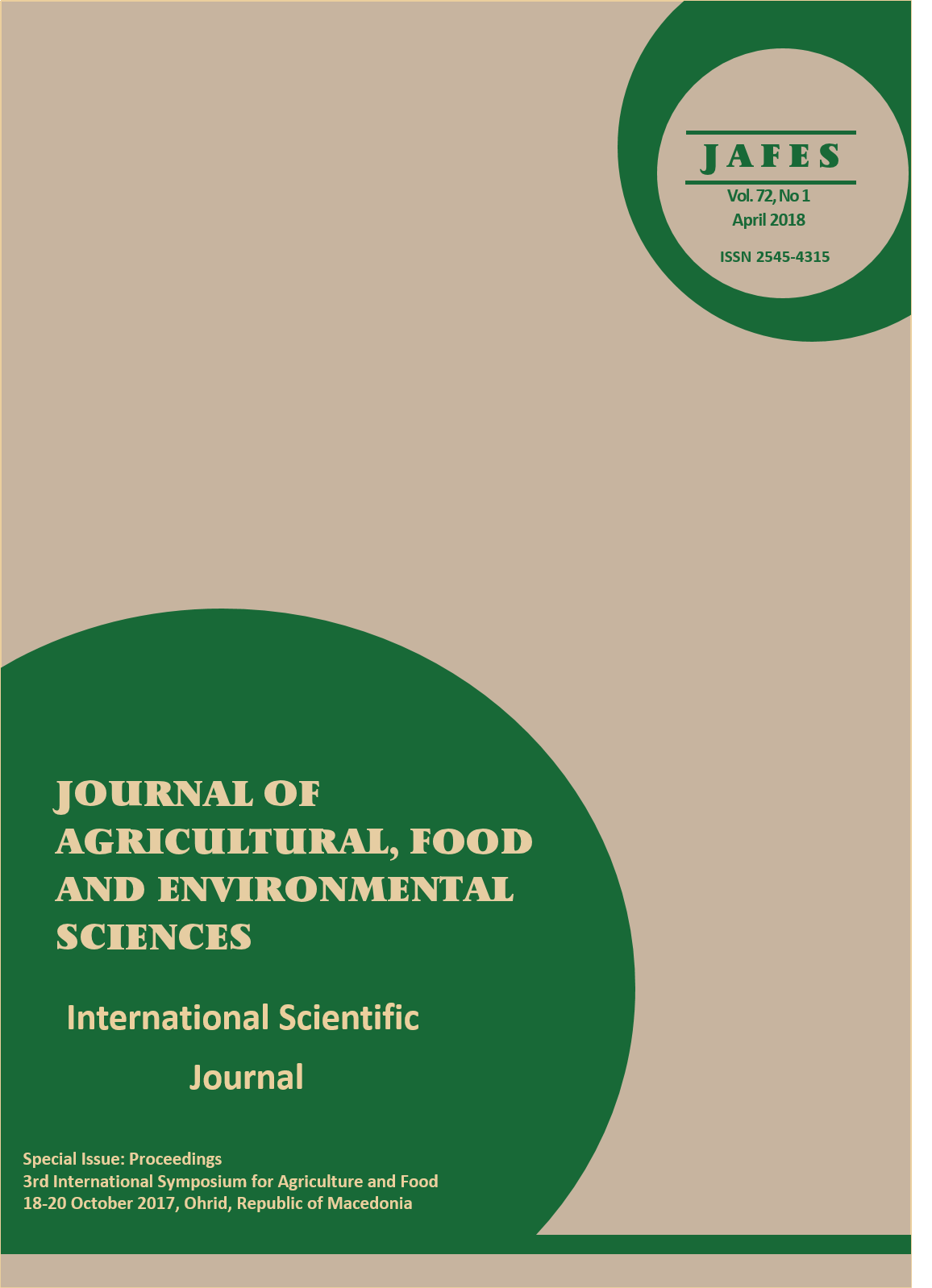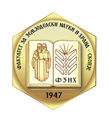PHYSICAL-CHEMICAL PROPERTIES OF WATER IN CRNA RIVER IN THE PELAGONIA REGION
Keywords:
pollution, indicators for oxygen regime, turbidity, suspended solids.Abstract
The main purpose of this paper is to examine the physical-chemical properties of water in Crna River in the Pelagonia Region. Therefore, four locations along the Crna River in the Pelagonia Region were taken as target measuring points of the physical-chemical properties of water: measuring point 1 (near village Novaci), measuring point 2 (before the inflow of water to the fifth channel), measuring point 3 (Crna River after the inflow of water from the fifth channel) measuring point 4 (Skochivir). The water samples for analysis were taken in January and July in 2012, 2013 and 2014 and the following physico-chemical parameters were analyzed during our investigation: the water temperature (determined with a digital thermometer), turbidity (by turbidimeter), suspended solids, total organic carbon (TOC), biological oxygen demand (BOD), chemical oxygen demand (COD) and dissolved oxygen (determined with UV PASTEL-instrument). From the obtained results in our investigation it can be concluded that the highest average turbidity is noted in measuring point 1 (24,4 mg/L) in July. The highest average BOD is measured in point 3 (14,1 mg/L) in July, as a result of the water inflow from the fifth channel. The lowest average amount of TOC was noted in January in measuring point 1 (2,0 mg/L), while the content of dissolved oxygen in same measuring point show the highest value (11,53 mg/L).
References
Adebayo, S.A and Usman, L.A (2009) Levels of ammonia - nitrogen, carbon dioxide, dissolved oxygen, and biochemical oxygen demand in Asa river, Ilorin, Nigeria. Faculty of Pure and Applied Sciences, Lautech, Printed in Nigeria, pp 488 – 495
Agbaba, J., (2005): Efekti fiziċko – hemijskih procesa pripreme vode za piċe na sadržaj prirodnih organskih materija u podzemnoj void, Doktorska disertacija, Prirodno-matematički fakultet, Novi Sad.
Brutsaerd, W., (2005) Hydrology An Introduction, Cambridge University Press
Małecka M., Donderski W., (2006) Heterotrophic Bacteria inhibiting water of the River Brda on the Bydgoszcz Town section. Institute of Biology and Environmental Protection Pomeranian Pedagogical University Słupsk



